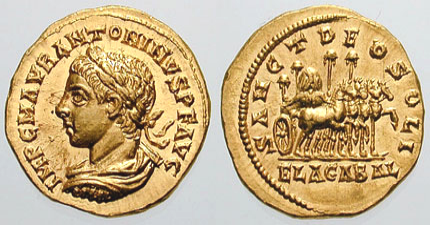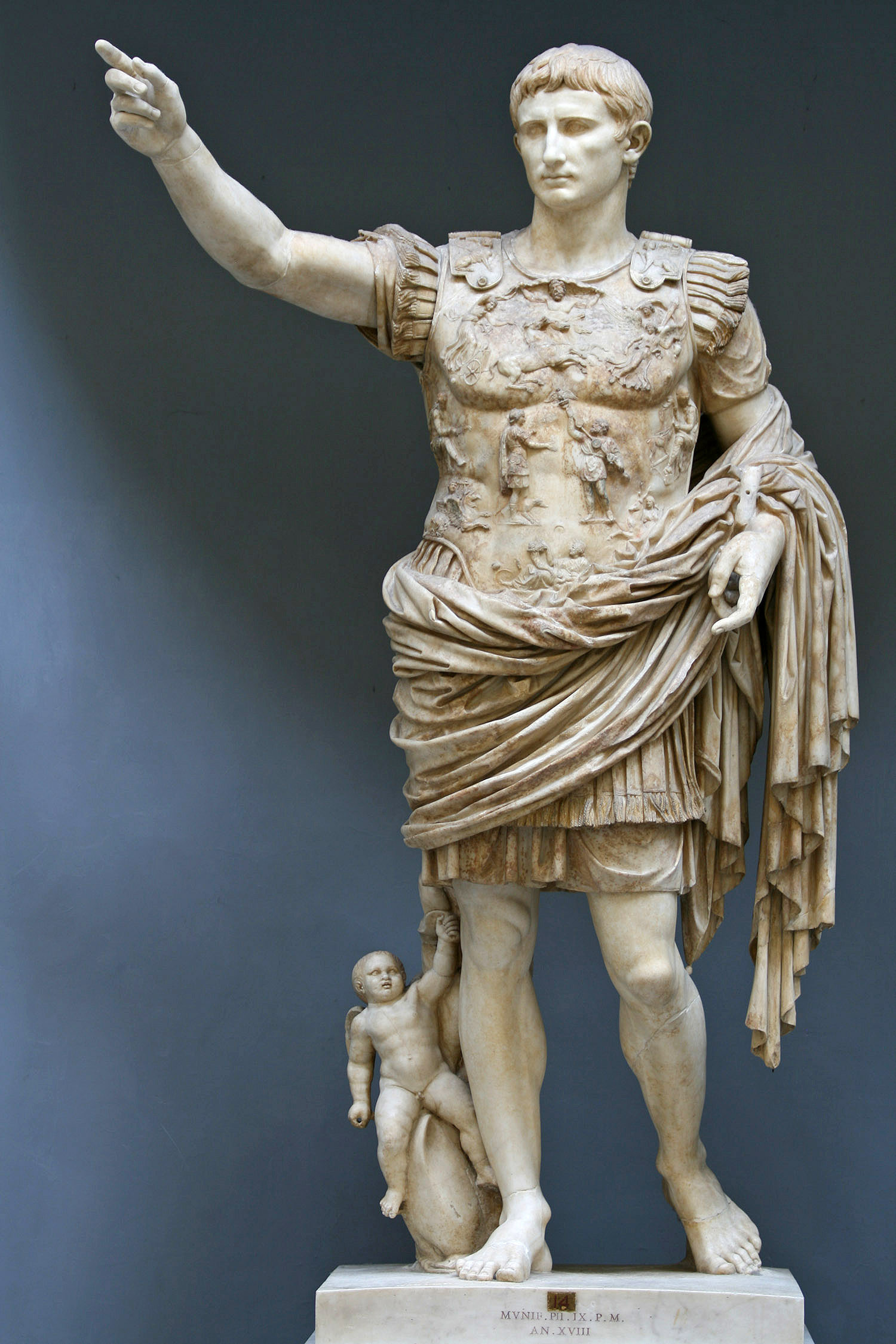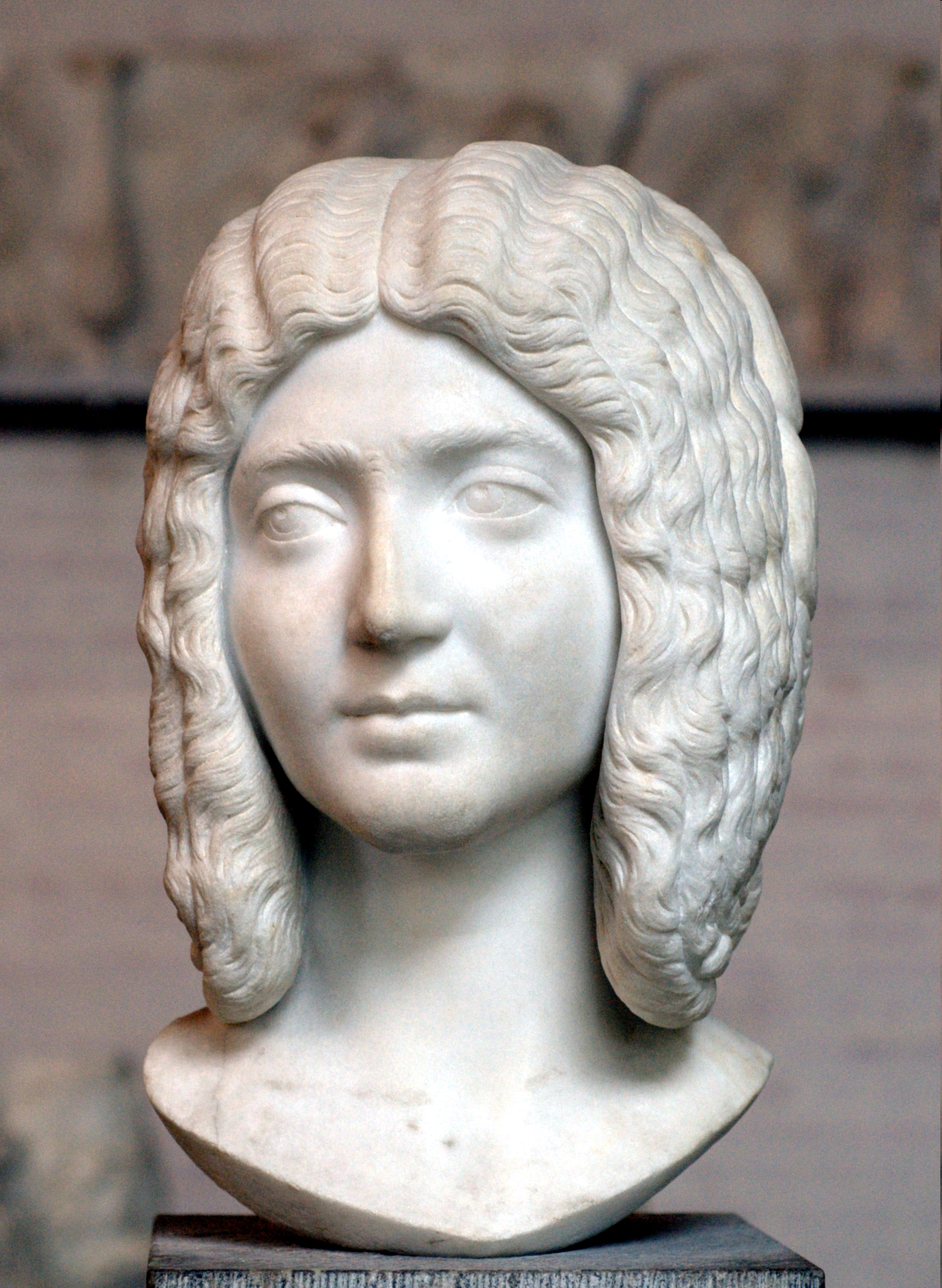|
Julius Agrippa
Julius Agrippa was a Syrian nobleman from the Royal family of Emesa who lived in the 2nd century. Agrippa was an Emesene nobleman who was a direct descendant of the Emesene Roman Priest-Client King Sohaemus of Emesa, also known as Gaius Julius Sohaemus. He was the brother of a Julius and the paternal uncle of Julius Bassianus, the Emesene High Priest of El-Gebal. El-Gebal is the Aramaic name for the Syrian Sun God. Agrippa served as a Primipilaris, a former leading Centurion. Agrippa was a man of some wealth as he owned an estate. When Agrippa died perhaps sometime before the late 180s, his name appears to be registered at the time of the Roman Jurist Quintus Cervidius Scaevola. Agrippa's estate was left to the Roman Empress Julia Domna, as he was the paternal great-uncle to Domna and her elder sister Julia Maesa. Agrippa is not to be confused with the powerful Lucius Julius Gainius Fabius Agrippa of Apamea.Birley, ''Septimius Severus: The African Emperor'', p.223 See also ... [...More Info...] [...Related Items...] OR: [Wikipedia] [Google] [Baidu] |
Syrian People
Syrians () are the majority inhabitants of Syria, indigenous to the Levant, most of whom have Arabic, especially its Levantine and Mesopotamian dialects, as a mother tongue. The cultural and linguistic heritage of the Syrian people is a blend of both indigenous elements and the foreign cultures that have come to rule the land and its people over the course of thousands of years. By the seventh century, most of the inhabitants of the Levant spoke Aramaic. In the centuries after the Muslim conquest of the Levant in 634, Arabic gradually became the dominant language, but a minority of Syrians (particularly the Assyrians and Syriac-Arameans retained Aramaic (Syriac), which is still spoken in its Eastern and Western dialects. The national name "Syrian" was originally an Indo-European corruption of Assyrian and applied to Assyria in northern Mesopotamia, however by antiquity it was used to denote the inhabitants of the Levant. Following the Muslim conquest of the Levant, Arab id ... [...More Info...] [...Related Items...] OR: [Wikipedia] [Google] [Baidu] |
Lucius Julius Gainius Fabius Agrippa
Lucius Julius Gainius Fabius Agrippa, also known as Lucius Julius Agrippa, () was a considerably wealthy man who descended from royalty. He lived in the second half of the 1st century and early part of the 2nd century AD in the Roman Empire. Family, ancestry, and early life Agrippa was a son of Cilician Prince Gaius Julius Agrippa (who served as a Quaestor for the Roman Province of Asia and before 109 served as a Praetorian Guard); his mother was a Roman woman who belonged or was related to the Fabia gens. His brother was a younger Gaius Julius Agrippa. Agrippa was of Jewish, Nabataean, Edomite, Greek, Armenian, Median and Persian origins. Through his paternal grandfather, Herodian Prince and King of Cetis Cilicia Gaius Julius Alexander, Agrippa was a descendant of King Archelaus of Cappadocia; King of Judea Herod the Great; his wife Mariamne and King Tigranes VI of Armenia. Through his paternal grandmother, Princess and Queen of Cetis Cilicia Julia Iotapa, he was a direct ... [...More Info...] [...Related Items...] OR: [Wikipedia] [Google] [Baidu] |
Ancient Roman Military Personnel
Ancient history is a time period from the beginning of writing and recorded human history through late antiquity. The span of recorded history is roughly 5,000 years, beginning with the development of Sumerian cuneiform script. Ancient history covers all continents inhabited by humans in the period 3000 BCAD 500, ending with the expansion of Islam in late antiquity. The three-age system periodises ancient history into the Stone Age, the Bronze Age, and the Iron Age, with recorded history generally considered to begin with the Bronze Age. The start and end of the three ages vary between world regions. In many regions the Bronze Age is generally considered to begin a few centuries prior to 3000 BC, while the end of the Iron Age varies from the early first millennium BC in some regions to the late first millennium AD in others. During the time period of ancient history, the world population was exponentially increasing due to the Neolithic Revolution, which was in full prog ... [...More Info...] [...Related Items...] OR: [Wikipedia] [Google] [Baidu] |
Ancient Roman Soldiers
Ancient history is a time period from the beginning of writing and recorded human history through late antiquity. The span of recorded history is roughly 5,000 years, beginning with the development of Sumerian cuneiform script. Ancient history covers all continents inhabited by humans in the period 3000 BCAD 500, ending with the expansion of Islam in late antiquity. The three-age system periodises ancient history into the Stone Age, the Bronze Age, and the Iron Age, with recorded history generally considered to begin with the Bronze Age. The start and end of the three ages vary between world regions. In many regions the Bronze Age is generally considered to begin a few centuries prior to 3000 BC, while the end of the Iron Age varies from the early first millennium BC in some regions to the late first millennium AD in others. During the time period of ancient history, the world population was exponentially increasing due to the Neolithic Revolution, which was in full pr ... [...More Info...] [...Related Items...] OR: [Wikipedia] [Google] [Baidu] |
People From Roman Syria
The term "the people" refers to the public or common mass of people of a polity. As such it is a concept of human rights law, international law as well as constitutional law, particularly used for claims of popular sovereignty. In contrast, a people is any plurality of persons considered as a whole. Used in politics and law, the term "a people" refers to the collective or community of an ethnic group or nation. Concepts Legal Chapter One, Article One of the Charter of the United Nations states that "peoples" have the right to self-determination. Though the mere status as peoples and the right to self-determination, as for example in the case of Indigenous peoples (''peoples'', as in all groups of indigenous people, not merely all indigenous persons as in ''indigenous people''), does not automatically provide for independent sovereignty and therefore secession. Indeed, judge Ivor Jennings identified the inherent problems in the right of "peoples" to self-determination, as i ... [...More Info...] [...Related Items...] OR: [Wikipedia] [Google] [Baidu] |
Julii
The gens Julia was one of the most prominent patrician families of ancient Rome. From the early decades of the Republic, members of this gens served in the highest offices of the Roman state, beginning with Gaius Julius Iulus, consul in 489 BC. However, the Julii are perhaps best known for Gaius Julius Caesar, the dictator and adoptive father of the emperor Augustus, through whom the name was passed to the Julio-Claudian dynasty of the first century AD. The Julius became very common in imperial times, as the descendants of persons enrolled as citizens under the early emperors began to make their mark in history.Drumann, ''Geschichte Roms'', vol. III, pp. 114–117; Smith, "Julia Gens", in ''Dictionary of Greek and Roman Biography and Mythology'', vol. II, pp. 642, 643; Münzer, "Iulius", in ''Realencyclopädie der Classischen Altertumswissenschaft'', vol. X, half-volume 19, cols. 106, 107. Origin According to Roman tradition, the Julii were among the Alban families br ... [...More Info...] [...Related Items...] OR: [Wikipedia] [Google] [Baidu] |
Emesene Dynasty
The Emesene (or Emesan) dynasty, also called the Sampsigeramids or the Sampsigerami or the House of Sampsigeramus (), were a Roman client dynasty of Syrian priest-kings known to have ruled by 46 BC from Arethusa and later from Emesa, Syria, until between 72 and 78/79, or at the latest the reign of Emperor Antoninus Pius (138–161). Iamblichus, the famous Neoplatonist philosopher of the third century, was one of their descendants, as was empress Julia Domna, matriarch of the Severan dynasty. Onomastics Most modern sources declare the family to be of Arab origin. Some members of the family such as Julius Bassianus, father of Julia Domna, are described in Roman sources as "a priest of the Sun, whom the Phoenicians, from whom he sprang, call Elagabalus". Since Emesa was well outside the traditional and geographical boundaries of Phoenicia, some modern historians consider the use of "Phoenician" in these sources a pseudo-ethnic label; one that arose from the political creation ... [...More Info...] [...Related Items...] OR: [Wikipedia] [Google] [Baidu] |
People From Homs
The term "the people" refers to the public or common mass of people of a polity. As such it is a concept of human rights law, international law as well as constitutional law, particularly used for claims of popular sovereignty. In contrast, a people is any plurality of persons considered as a whole. Used in politics and law, the term "a people" refers to the collective or community of an ethnic group or nation. Concepts Legal Chapter One, Article One of the Charter of the United Nations states that "peoples" have the right to self-determination. Though the mere status as peoples and the right to self-determination, as for example in the case of Indigenous peoples (''peoples'', as in all groups of indigenous people, not merely all indigenous persons as in ''indigenous people''), does not automatically provide for independent sovereignty and therefore secession. Indeed, judge Ivor Jennings identified the inherent problems in the right of "peoples" to self-determination, as i ... [...More Info...] [...Related Items...] OR: [Wikipedia] [Google] [Baidu] |
Imperial Roman Army
The Imperial Roman Army was the military land force of the Roman Empire from 27 BC to 476 AD, and the final incarnation in the long history of the Roman army. This period is sometimes split into the Principate (27 BC – 284 AD) and the Dominate (284–476) periods. Under Augustus (), the army consisted of Roman legion, legions, eventually and also ''Numerus (Roman military unit), numeri''. By the end of Augustus' reign, the imperial army numbered some 250,000 men, equally split between 25 legions and 250 units of auxiliaries. The numbers grew to a peak of about 450,000 by 211, in 33 legions and about 400 auxiliary units. By then, auxiliaries outnumbered legionaries substantially. From this peak, numbers probably underwent a steep decline by 270 due to plague and losses during multiple major invasions by the Germanic Tribal Folk. Numbers were restored to their early 2nd-century level of c. 400,000 (but probably not to their 211 peak) under Diocletian (r. 284–305). After the E ... [...More Info...] [...Related Items...] OR: [Wikipedia] [Google] [Baidu] |
Apamea, Syria
Apamea (, ''Apameia''; ), on the right bank of the Orontes river, Orontes River, was an ancient Greek and Roman city. It was the capital of Apamene under the Macedonians, became the capital and Metropolitan Archbishopric of late Roman province Roman Syria, Syria Secunda, again in the crusader period. Amongst the impressive ancient remains, the site includes the Great Colonnade at Apamea, Great Colonnade which ran for nearly making it among the longest in the Roman Empire, Roman world and the Roman Theatre at Apamea, Roman Theatre, one of the largest surviving theatres of the Roman Empire with an estimated seating capacity in excess of 20,000. The site lies on the edge of the modern town of Qalaat al-Madiq, about to the northwest of Hama, Syria, overlooking the Ghab valley. History Hellenistic era After the conquest of the region by Alexander the Great and the subsequent wars between his generals, and according to the new interpretation of a new historical and iconograph ... [...More Info...] [...Related Items...] OR: [Wikipedia] [Google] [Baidu] |
Julia Maesa
Julia Maesa (7 May before 160 AD – AD) was a member of the Severan dynasty of the Roman Empire who was the grandmother of emperors Elagabalus and Severus Alexander, elder sister of empress Julia Domna, and mother of Julia Soaemias and Julia Mamaea. She wielded influence during the reigns of her grandsons as List of Augustae, Augusta of the Empire from 218 to her death, especially on their elevation to emperors. Born in Homs, Emesa, Roman Syria, Syria (modern day Homs), to an Arab family of priests of the deity Elagabalus (deity), Elagabalus, Maesa and her sister Domna were the daughters of Julius Bassianus. Through her sister's marriage, Maesa became sister-in-law to Septimius Severus and aunt of Caracalla and Geta (emperor), Geta, who all became emperors. She married fellow Syrian Julius Avitus, who was of consular rank. They had two daughters, Soaemias and Mamaea, who became mothers of Elagabalus and Severus Alexander, respectively. As one of the Severan dynasty's prominen ... [...More Info...] [...Related Items...] OR: [Wikipedia] [Google] [Baidu] |
Royal Family Of Emesa
The Emesene (or Emesan) dynasty, also called the Sampsigeramids or the Sampsigerami or the House of Sampsigeramus (), were a Roman Empire, Roman client dynasty of Syrian priest-kings known to have ruled by 46 BC from al-Rastan, Arethusa and later from Emesa, Roman Syria, Syria, until between 72 and 78/79, or at the latest the reign of Emperor Antoninus Pius (138–161). Iamblichus, the famous Neoplatonist philosopher of the third century, was one of their descendants, as was empress Julia Domna, matriarch of the Severan Dynasty, Severan dynasty. Onomastics Most modern sources declare the family to be of Arab origin. Some members of the family such as Julius Bassianus, father of Julia Domna, are described in Roman sources as "a priest of the Sun, whom the Phoenicians, from whom he sprang, call Elagabalus". Since Emesa was well outside the traditional and geographical boundaries of Phoenicia, some modern historians consider the use of "Phoenician" in these sources a pseudo-ethnic l ... [...More Info...] [...Related Items...] OR: [Wikipedia] [Google] [Baidu] |







